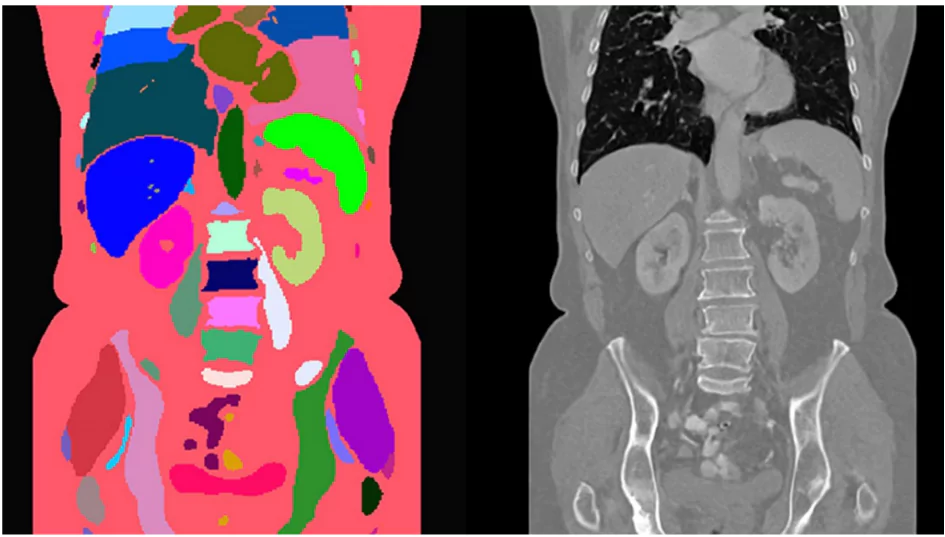AI-generated synthetic medical images offer a scalable, ethical, and cost-effective solution to the high demand for annotated medical images, addressing both privacy concerns and resource limitations in healthcare.
About Synthetic Medical Images
- Synthetic medical images are created by AI algorithms without the use of traditional imaging devices (MRI, CT scans, X-rays).
- These images simulate real-world medical data but are generated entirely by mathematical models like GANs, variational autoencoders (VAEs), and diffusion models.

Enroll now for UPSC Online Course
How Synthetic Medical Images Are Created?
- Generative Adversarial Networks (GANs):
- Consist of a generator and a discriminator that improve together:
- The generator creates fake images while the discriminator identifies whether an image is real or synthetic.
- Variational Autoencoders (VAEs):
- Compress an image into a latent space and then recreate it, minimising the difference between the original and synthetic images over time.
- Diffusion Models:
- Start with random noise and gradually transform it into realistic images in a step-by-step process.
Advantages of Synthetic Medical Images
- Bridges gap in data supply:
- Medical images are expensive and time-consuming to collect, and privacy concerns limit their sharing.
- Synthetic images provide an ethical, scalable, and cost-effective solution.
- Enhance AI development:
- Allows for more robust training of AI models by providing a larger dataset for analysis without violating patient privacy.
- Intra- and Inter-Modality Translation:
- Intramodality translation: Enhances or reconstructs images within the same modality (e.g., improving MRI images).
- Inter-modality translation: Converts images between modalities (e.g., generating CT scans from MRI data).
- Cost and Time Efficiency:
- Synthetic images reduce the time and expense involved in collecting real-world medical images.
- Overcome Data Scarcity:
- Can provide abundant, annotated datasets for AI model training, particularly for rare medical conditions.
- Ethical and Privacy Considerations:
- Eliminates the need to use real patient data, safeguarding patient confidentiality while promoting research and collaboration.
Challenges of Synthetic Medical Images
- Deepfakes and Malicious Applications:
- Synthetic data could be exploited for fraudulent purposes, such as submitting false insurance claims or introducing fabricated clinical findings.
- Loss of Real-World Nuances:
- AI-generated images might not capture subtle complexities (e.g., tissue density variations), leading to inaccurate diagnoses.
- Truth Erosion:
- If AI models rely too much on synthetic data, there is a risk that these models could distort real-world healthcare practices, potentially misaligning diagnoses with actual patient conditions.
- Overdependence on Synthetic Data:
- Exclusive use of synthetic images for AI training could erode the distinction between real and generated data, compromising diagnostic accuracy.
- Regulatory and Ethical Concerns
- Human oversight: Reliance on AI for medical diagnostics should not be left unchecked, Human oversight is needed.
- Regulation: Needed to ensure that synthetic medical images are used responsibly, avoiding potential misuse or the erosion of clinical trust.
Check Out UPSC CSE Books From PW Store
Way Forward
- Strengthen Ethical Regulations: Develop clear guidelines to prevent misuse, such as deep fakes, and ensure transparency in synthetic data use.
- Maintain Human Oversight: Ensure close collaboration between clinicians and AI engineers to balance AI innovation with real-world medical complexities.
- Balance Synthetic and Real Data: Use a mix of synthetic and real medical images in AI models to capture nuances and maintain diagnostic accuracy.
- Enhance AI Model Accuracy: Focus on robust AI models that differentiate between real and synthetic data, ensuring clinical utility.
- Educate Healthcare Professionals: Train medical staff to understand and effectively use synthetic data, emphasising awareness of risks and benefits.
![]() 11 Oct 2024
11 Oct 2024

